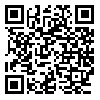جلد 9، شماره 3 - ( 6-1399 )
جلد 9 شماره 3 صفحات 17-13 |
برگشت به فهرست نسخه ها
چکیده: (722 مشاهده)
Introduction: The temporomandibular joint’s disease is a group of complex diseases, many of which have no clinical signs and are identified through diagnostic assays, including radiological images. One of the methods of imaging that provides information about this disease is CBCT imaging. The purpose of this study was to evaluate the condylar bony changes in CBCT images of patients referring to the Radiology Center of a Dental School in 2019.
Materials and Methods: In this descriptive cross-sectional study, CBCT radiographs of 206 patients (121 females and 85 males) referring to the Radiology Center of a Dental School were chosen in order to determine hypoplasia, hyperplasia, bifid condyle, sclerotic changes, flattening, erosion and osteophyte in both sides. These radiographs were studied by a trained dentistry student to determine the changes.
Results: The prevalence of condylar bony changes was 65.3% and no difference was observed between right and left condyles. The highest frequencies of condylar bony changes was related to flattening with a frequency of 131 condyles (31.7%), erosion with a frequency of 78 condyles (18.9%) and osteophyte with a frequency of 76 condyles (18.4%).
Conclusion:In the population of this study, there is a correlation between age and the prevalence of condylar bony changes and the prevalence of flattening, erosion, and osteophyte. Erosion also significantly increased in women and osteophyte increased in men.
Materials and Methods: In this descriptive cross-sectional study, CBCT radiographs of 206 patients (121 females and 85 males) referring to the Radiology Center of a Dental School were chosen in order to determine hypoplasia, hyperplasia, bifid condyle, sclerotic changes, flattening, erosion and osteophyte in both sides. These radiographs were studied by a trained dentistry student to determine the changes.
Results: The prevalence of condylar bony changes was 65.3% and no difference was observed between right and left condyles. The highest frequencies of condylar bony changes was related to flattening with a frequency of 131 condyles (31.7%), erosion with a frequency of 78 condyles (18.9%) and osteophyte with a frequency of 76 condyles (18.4%).
Conclusion:In the population of this study, there is a correlation between age and the prevalence of condylar bony changes and the prevalence of flattening, erosion, and osteophyte. Erosion also significantly increased in women and osteophyte increased in men.
| بازنشر اطلاعات | |
 | این مقاله تحت شرایط Creative Commons Attribution-NonCommercial 4.0 International License قابل بازنشر است. |

